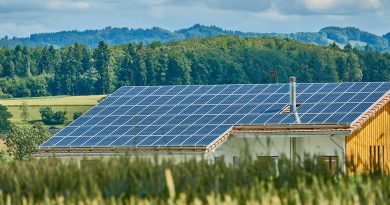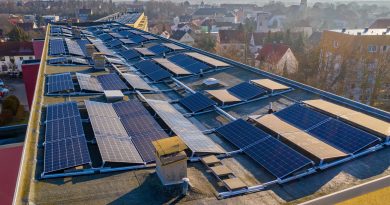What Is Needed For Off Grid Solar System?
With the rising interest in sustainable living and energy independence, off-grid solar systems are becoming increasingly popular. Whether you’re planning to live in a remote area, want to reduce your dependency on the electrical grid, or simply wish to minimize your environmental footprint, an off-grid solar system can be an excellent solution. But what exactly do you need to set up an off-grid solar system? In this blog, we’ll break down the essential components and considerations for building a reliable and efficient off-grid solar setup.
Table of Contents
What is an Off-Grid Solar System?
An off-grid solar system is a standalone power system that operates independently of the public electricity grid. It generates electricity from solar panels and typically stores energy in batteries for use when the sun isn’t shining. Unlike grid-tied systems, off-grid systems require careful planning and the right components to ensure a continuous power supply.
Essential Components of an Off-Grid Solar System
To set up an effective off-grid solar system, you’ll need the following key components:
Solar Panels:
Function: Solar panels are the heart of your off-grid system. They capture sunlight and convert it into electricity.
Types: Monocrystalline, polycrystalline, and thin-film are the most common types of solar panels. Monocrystalline panels are known for their high efficiency and compact size, making them ideal for off-grid setups with limited space.
Charge Controller:
Function: The charge controller regulates the voltage and current coming from the solar panels to the batteries. It prevents overcharging, which can damage the batteries, and ensures that the batteries are charged efficiently.
Types: PWM (Pulse Width Modulation) and MPPT (Maximum Power Point Tracking) are the two main types of charge controllers. MPPT controllers are more efficient and are generally recommended for off-grid systems.
Batteries:
Function: Batteries store the electricity generated by the solar panels for use when the sun isn’t shining, such as at night or on cloudy days.
Types: Lead-acid and lithium-ion are the most common battery types used in off-grid systems. Lithium-ion batteries are more expensive but offer longer life, higher efficiency, and greater storage capacity.
Inverter:
Function: The inverter converts the direct current (DC) electricity stored in the batteries into alternating current (AC) electricity, which is used by most household appliances.
Types: Pure sine wave inverters are preferred for off-grid systems because they provide a consistent and clean power output suitable for all types of electrical devices.
Backup Generator (Optional):
Function: A backup generator can provide additional power during periods of low sunlight or when the battery charge is low. While not always necessary, it can be a useful component for ensuring a reliable power supply in all conditions.
Fuel Types: Generators can run on various fuels, including diesel, propane, or natural gas. Choose one based on availability and your environmental considerations.
Mounting Structure:
Function: The mounting structure holds your solar panels in place and ensures they are positioned at the correct angle to capture maximum sunlight.
Types: Roof-mounted systems are common for residential setups, while ground-mounted systems are used when roof space is limited or if there’s a need for easy access for maintenance.
Wiring and Connectors:
Function: High-quality wiring and connectors are essential for safely and efficiently transferring electricity between the components of your off-grid system. Proper wiring ensures minimal power loss and reduces the risk of electrical issues.
Monitoring System:
Function: A monitoring system tracks the performance of your off-grid solar system, including energy production, battery status, and overall system health. This helps you ensure that everything is running smoothly and allows for early detection of any potential issues.
Planning Your Off-Grid Solar System
Before you start assembling your off-grid solar system, it’s crucial to plan carefully to ensure that your setup meets your energy needs. Here’s what you need to consider:
Calculate Your Energy Needs:
List all the appliances and devices you’ll be powering with your off-grid system.
Calculate the total energy consumption in kilowatt-hours (kWh) per day.
This will help you determine the size of the solar array and battery bank you need.
Consider Your Location:
The amount of sunlight your location receives will affect the size and efficiency of your solar system.
Consider factors like shading from trees or buildings and the average number of sunlight hours per day.
Budget and Cost:
Off-grid solar systems can be a significant upfront investment, so it’s important to budget accordingly.
Consider the cost of components, installation, and potential maintenance.
System Scalability:
Think about your future energy needs. If you plan to expand your system later, choose components that can easily be scaled up, such as additional solar panels or battery storage.
Maintenance and Support:
Regular maintenance is essential to keep your off-grid system running efficiently. Make sure you have access to support and replacement parts if needed.
Conclusion: Building the Best Off-Grid Solar System
Setting up an off-grid solar system requires careful planning and the right components, but the result is a reliable and independent power source that can meet your energy needs in a sustainable way. By understanding what’s needed and choosing high-quality components, you can build a system that provides electricity whenever and wherever you need it.
Ready to Go Off-Grid?
Start by assessing your energy needs and exploring the options for solar panels, batteries, and inverters. Whether you’re looking to live independently or just want a backup power solution, an off-grid solar system can provide the energy security you’re looking for.
Need Help?
Contact a solar expert or provider to discuss your options and get a customized plan for your off-grid solar system. Let’s take the first step towards energy independence and a greener future together!




